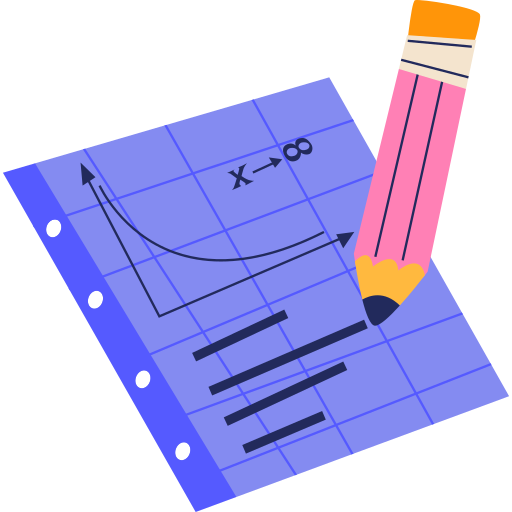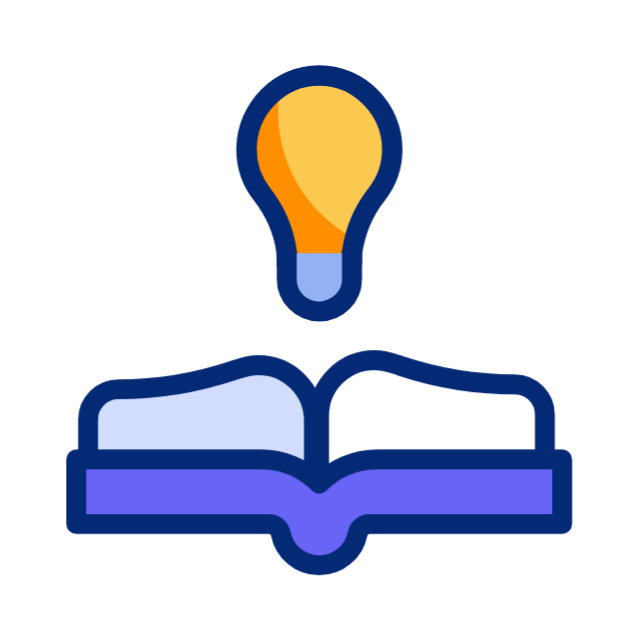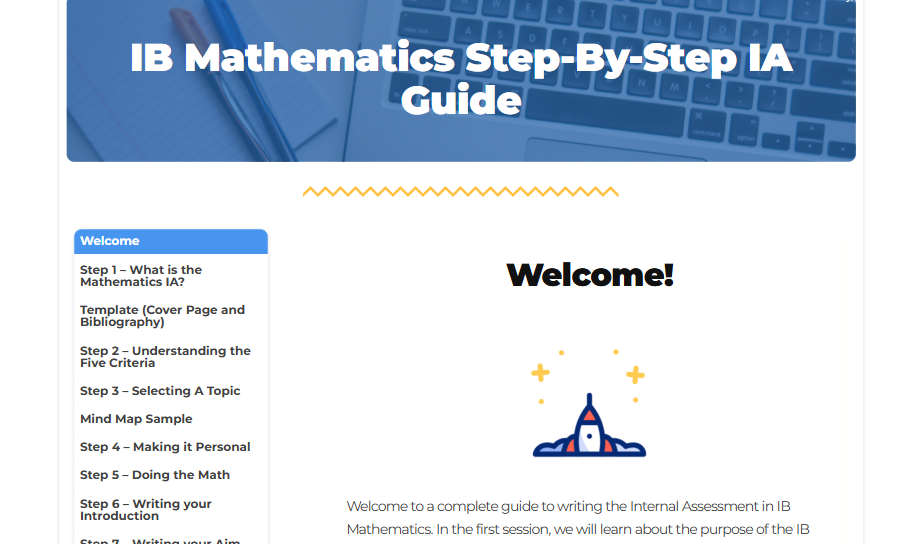Ace Your IB Math IA: The Ultimate Student-Friendly Guide 🚀
Hey IB Math warriors! Feeling overwhelmed by the IB Math IA? You’re not alone. This guide is here to simplify the process and make your Internal Assessment journey smooth, clear, and—believe it or not—fun! Let’s dive into everything you need to know to crush your IA and impress your examiner.

🎓 Get a Head Start with Our Free Step-By-Step IB Math IA Guide!
Try the first part of our IB Math IA Step-by-Step Guide completely free. Explore how to choose your topic, understand the assessment criteria, and avoid common mistakes—all in an interactive online format. 👇
IB Mathematics Step-By-Step IA Guide
Free Preview

Welcome!

Welcome to a complete guide to writing the Internal Assessment in IB Mathematics. In the first session, we will learn about the purpose of the IB Mathematics IA and how it contributes your IB educational experience.
Keep in mind that this resource is designed to support your face-to-face instruction and is not designed to be a replacement.
That’s it! Lets get started!
Step 1 – What is the Mathematics IA?

Welcome to a complete guide to writing the Internal Assessment in IB Mathematics. In the first session, we will learn about the purpose of the IB Mathematics IA and how it contributes your IB educational experience. As an exploration, the IA has a recommended structure and specific requirements that are different from other tasks and assessments in the IB Mathematics courses, different from IAs in other subject areas, and different from the extended essay (EE).
Why am I writing in a mathematics course?
Typically, in most mathematics courses, there is little to no essay writing involved. Assignments and assessments are based on a student’s ability to answer certain types of questions of varying difficulty. Each student then receives a score based on the correctness of the answer given.
Similarly, throughout this course, you have been practicing the “application” process. In other words, you have been given mathematical tools, followed by real-world situations in which to apply them. Conversely, the IA allows you to practice the “interpretation” process, meaning you will start with a real-world situation and then determine the most appropriate tool with which to explore that situation.
The IB Mathematics IA is your opportunity to show mathematical mastery beyond your ability to solve prescribed problems. Through this exploration, you can express your understanding of mathematics in other ways, including:
- Appreciation for Mathematics: You choose a real-world topic of personal interest that can be interpreted using the skills learned during the course. This allows you to comment on your appreciation of the applicability of mathematics in everyday situations.
- Creative Communication: You speak in your own voice throughout the process and react to your own results. This allows you to move the exploration in new directions of your choosing.
- Reflection and Growth: You examine your own results through many lenses and reflect on what you’ve learned, and what others could learn through your findings. This allows you to discover the importance of new mathematical discoveries and their impact on the world.
How do I structure a Mathematics IA?
The IB Mathematics IA doesn’t have a defined structure like other IAs, but most explorations usually follow a similar format:
- Introduction: the main idea of the IA, any relevant background information, and why it interests you
- Aim: the mathematical purpose of your IA, what you will be exploring, and possibly what you hope to accomplish
- Rationale: (optional but helpful) the reason why accomplishing your purpose will be helpful to others
- Mathematical Discussion: a description of each step in the process, an explanation of the calculations involved, and a reflective response to the results
Note: there may be multiple mathematical processes, each of which could have its own mathematical discussion described above.
- Reflection: a deeper reflection on overall results pertaining to the process, results, personal learning, and real-world implications.
- Conclusion: a closing paragraph that summarizes everything you accomplished throughout the exploration process
What makes the Mathematics IA different?
Every IA within the IB Programme has different requirements and specifications. Here are the guidelines to keep in mind while working on your Mathematics IA:
- Title Page: You must have a cover page that gives only the title and the page count, with no identifying information whatsoever. A sample title page can be found on page 5.
- Page Count: It is suggested that your Mathematics IA be 12 to 20 pages in length, not including bibliography and appendices. This is just a guideline, and students will not be penalized specifically for IA’s that are shorter than 12 pages or longer than 20 pages.
- References: All references must be cited appropriately in a bibliography, including any uses of artificial intelligence sites. If references are not cited, your IA may be flagged for plagiarism and/or academic dishonesty. A sample bibliography can be found on page 6.
Note: While headings and a table of contents can help with the organization of your thoughts and writing, they are not a specific requirement for the Mathematics IA.
How will my IA be graded?
In IB Mathematics, your IA is worth 20% of the total course grade. This applies to HL and SL students alike.
The IA itself will be assessed based on five specific criteria. These include:
- your overall presentation,
- your ability to communicate mathematics clearly,
- your level of personal engagement in the exploration,
- the quality and depth of your reflections, and
- your mastery of the mathematics that you use.
(Details of each of these components will be discussed in the next session.)
Can I get feedback from my teacher before it’s graded?
Yes. Your instructor is required to give feedback on your IA, but it can only be given once, and only on your rough draft. This can be in written form or in a conversation, or both. Your instructor will inform you of the strengths and shortcomings of your IA but will not advise you on how to fix any problem areas.
Conclusion
It is important that you understand the differences between the IAs in all courses, so please return to this session as needed to make sure that your Mathematics IA meets all the requirements and guidelines to ensure a desirable score.
In the next session, we will discuss the grading rubric for your IA. This will help you understand the specific attributes of an IA that allow it to earn a good score.
Template (Cover Page and Bibliography)
Session 2 – Understanding the Five Criteria

Welcome to the second session, where we will learn about the assessment criteria for the IB Mathematics Internal Assessment. If you know and understand how your exploration will be graded, you have a better chance of writing one that will earn a desirable score. Here are the five criteria:
Criterion A: Presentation (4 points)
In terms of presentation, you will be assessed on the following:
- Coherence: focusing on your aim in a way that flows logically through every point of discussion, so that a reader can follow your thought process from the introduction to the conclusion.
Your IA could have no coherence, some coherence, or be coherent.
- Organization: structuring your ideas appropriately on the page, with a format similar to the one outlined in Session 1, and with diagrams accompanying any discussion related to them.
Your IA could have no organization, some organization, or be well organized.
- Conciseness: keeping the exploration succinct, non-repetitive, and relative to the aim.
Your IA could have no conciseness or be concise.
Criterion B: Mathematical Communication (4 points)
In terms of mathematical communication, you will be assessed on the following:
- Relevance: using terminology and variables that are related to the topics of discussion and displaying data in a meaningful way.
Your IA could have no relevance, some relevance, or be relevant.
- Appropriateness: defining variables before use, giving titles and axis labels to all graphs and tables, displaying equations properly, and rounding results in a consistent and meaningful way that you can communicate to the reader.
Your IA could be not appropriate, partially appropriate, or appropriate.
- Consistency: using the same notation and variables for the same quantities throughout the exploration.
Your IA could be not consistent, mostly consistent, or consistent throughout.
Criterion C: Personal Engagement (3 points)
Personal engagement is the ability of the author to express individual interest in the topic, the process, and/or the results. This can be done in several ways. The most obvious is by informing the reader of the personal connection to the topic that was chosen. Other ways include generating original data, making predictions based on personal experience, and approaching the same problem using different methods. The authenticity and frequency of personal engagement seen in your IA helps to increase the score for this criterion.
Your IA could have no personal engagement, some personal engagement, significant personal engagement, or outstanding personal engagement.
Criterion D: Reflection (3 points)
Reflection refers to the ability of the author to analyze the accuracy and significance of results, the limitations and difficulties of the processes, what was learned, what can be implied, as well as possible next steps or alternate approaches to the topic. The depth, quality, and frequency of the reflection in your IA helps to increase the score for this criterion.
Your IA could have limited reflection, meaningful reflection, critical reflection, or substantial reflection.
Criterion E: Use of Mathematics (6 points)
In terms of using mathematics, you will be assessed on the following:
- Relevance: using appropriate terminology and methodology at a high enough level to accomplish your aim.
Your IA could have no relevant mathematics, some relevant mathematics, or relevant mathematics.
- Understanding: correctly interpreting the process and steps being used, as well as the results obtained and their meaning
You could demonstrate no understanding, limited understanding, some knowledge and understanding, good knowledge and understanding, or thorough knowledge and understanding.
- Correctness: showing accurate formulas and carrying out mathematical steps correctly with accurate results
Your IA could be regarded as not correct, partially correct, mostly correct, or correct.
In a later session, we will discuss specific positive and negative items that can affect your score in each criterion. You will also be provided with a checklist to help with self- and peer-assessment of your IA.
Conclusion
Unlike the External Assessment papers, the IA focuses more on your ability to organize a coherent sequence of ideas, communicate results clearly through graphs and tables, express strong personal interest in the topic, and reflect deeply on the results and process. These first four criteria constitute 70% of your IA score, whereas Criterion E only constitutes 30%, so you should put an appropriate amount of effort on these attributes of your exploration.
Understanding how the points for your IA are distributed will help you create an exploration that achieves a more desirable score.
In the next session, we will discuss how to select a topic for your IA. This process will help you demonstrate a higher level of Personal Engagement (Criterion C) in your exploration when you begin writing.
Step 3 – Selecting A Topic

In this session, we will discuss strategies for selecting your IA topic. Choosing an appropriate topic will have the most impact on the success of your exploration. While your instinct may be to apply your favorite topic in mathematics to a real-world situation, it is the converse that will make your IA more interesting for the reader.
The process of selecting your topic is unique to everyone, but we will talk about a common series of steps that most students follow.
Red Flag topics
Many students have not undergone the proper process for choosing an appropriate topic for their Mathematics IA. This is evident by the number of students who focus on choosing a mathematical idea instead of something that is more personal.
As a result, many Mathematical IAs have been written about topics like the Monty Hall problem, the Fibonacci sequence, the Golden Ratio, the Four-Color problem, the Birthday Paradox, probabilities in card and dice games, and so on. Since the results of these can easily be found online, the resulting work is not an exploration at all. Rather, it is simply mathematics calculations with answers that can be easily found and corrected as needed.
Other students decide to impress the reader by discussing a mathematical topic that is known to be beyond the level of the course. The danger in doing so is similar to choosing a well-known mathematical problem like those listed in the previous paragraph: any properties, theorems, or sample problems they encounter have solutions that can be used to verify their own findings, resulting in less of an exploration, and more of a lesson from a textbook.
This is why it is better to begin the brainstorming process by thinking about what appeals to you personally. The steps in this process allow you to express your curiosity and fascination with the way in which mathematics enhances your own interests even further. Let’s get started!
Recommended Mind Map software
Many students find it helpful to use online software to organize their topic selection process. Here is a list of websites that might help with the process:
- Coggle (it) for real-time collaboration
- MindMeister (com) for customized styles and layouts
- MindNode (com) for Apple users
If you are interested in mind mapping software that includes AI capabilities, here are some more recommendations:
- Ayoa (com) for intuitively designed mind mapping
- Xmind (app) for designs that can include formulas and equations
- Mindomo (com) for real-time and offline editing across platforms
- Venngage (com) for infographic mind maps
Once you have decided on a mind mapping tool that works best for you, it’s time to start the topic selection process.
Step 1: Examine your personal interests
Create a list of things that interest you, without considering any mathematical connection. List your hobbies, extracurricular activities, or personal goals. Think of where you would like to travel or your favorite books or movies. Consider anything about the real world that fascinates you. Your list should have at least three items from which to build.
Step 2: Link your interests to the five mathematical topics
There are five main topics in the IB Mathematics courses:
- Number and Algebra
- Functions
- Geometry and Trigonometry
- Statistics and Probability
- Calculus
For each of your interests, determine whether each of these topics can be applied, making sure that it can be applied at the level of the course or beyond. You should be able to apply at least three topics to each of your areas of interest.
Step 3: Find appropriate tools
Within each mathematical topic, think about the specific mathematical tools and concepts, and how they could be used to explore each area of interest further. How can derivatives be applied to your interest in horses? How could geometry be applied to your interest in skiing? How could statistics be applied to your interest in European history? How can modelling be used to plan a trip to the grocery store? For each topic, within each area of interest, set a goal of at least three specific mathematical tools.
Step 4: Create an aim for each specific mathematical tool
The aim of your Mathematics IA is a critical part of the final product. It is the overall purpose of writing your Mathematics IA. Everything in your exploration must be linked to the aim to give focus to the author, and to demonstrate coherence to the reader.
This is not the same as a research question. You are not trying to answer something definitively. You are exploring mathematics through the lens of your interest: the possible relationship between quantities, the way in which things might change under certain conditions, the potential trends of measurements over time.
For each tool, within each mathematical topic, applied to each interest, create an aim. The aim should be specific so that the IA does not become too broad, leading to a lack of conciseness.
Step 5: Choose the strongest idea
If you have listed at least three interests, each with at least three mathematical topics, and each of those with at least three tools or concepts, you now have 27 potential aims from which to choose. At this point, it’s advisable to choose five of these topics that you feel would make the most interesting exploration.
Compare the steps described above to what most students do in the brainstorming process: choose one interest and think of a recent mathematical tool that they’ve used. Usually in this case, the author spends a lot of time researching and writing, only to realize that the resulting work will not score well, but also realizing that this was their only idea.
With so many possible Mathematics IA topics, if you encounter an obstacle with the research, the writing, or the mathematics, you have a wide selection of other options with which to start over. If you manage your time properly, you can still produce a strong piece of writing, even after your third or fourth attempt at choosing a topic for your IA. A sample Topic Selection mind map can be found on page 15.
Conclusion
You are given a certain number of hours to work on your Mathematics IA throughout the duration of the course. If you start early and brainstorm thoroughly to find many possible ideas, it’s easier to find a meaningful aim that can easily be replaced if problems arise at the beginning of the process.
In the next session, we will discuss strategies for incorporating more personal engagement (Criterion C) in your Mathematics IA. By demonstrating a genuine interest, you not only improve your score, but you create a captivating piece of writing for the reader.

Oh no! You dont have access
But you could — with the Elite Student: All-Access Pass.
Get access to all of our current subjects. All tools. All in one place.

Oh no! You dont have access
But you could — with the Elite Student: All-Access Pass.
Get access to all of our current subjects. All tools. All in one place.

Oh no! You dont have access
But you could — with the Elite Student: All-Access Pass.
Get access to all of our current subjects. All tools. All in one place.

Oh no! You dont have access
But you could — with the Elite Student: All-Access Pass.
Get access to all of our current subjects. All tools. All in one place.

Oh no! You dont have access
But you could — with the Elite Student: All-Access Pass.
Get access to all of our current subjects. All tools. All in one place.

Oh no! You dont have access
But you could — with the Elite Student: All-Access Pass.
Get access to all of our current subjects. All tools. All in one place.

Oh no! You dont have access
But you could — with the Elite Student: All-Access Pass.
Get access to all of our current subjects. All tools. All in one place.

Oh no! You dont have access
But you could — with the Elite Student: All-Access Pass.
Get access to all of our current subjects. All tools. All in one place.

Oh no! You dont have access
But you could — with the Elite Student: All-Access Pass.
Get access to all of our current subjects. All tools. All in one place.

Oh no! You dont have access
But you could — with the Elite Student: All-Access Pass.
Get access to all of our current subjects. All tools. All in one place.
🤔 What Exactly is the IB Math IA?
Think of your Math IA as your personal math project—your chance to explore an area you’re genuinely curious about. Unlike those timed tests that cause stress and sweaty palms, the IA lets you choose your own topic, explore math creatively, and express your ideas clearly. Whether you’re taking Analysis & Approaches (AA) or Applications & Interpretation (AI), this IA counts for a solid 20% of your final IB grade. Yup, it’s that important.

🌟 Why Should You Care?
Big Marks: It’s worth a significant chunk of your final IB grade.
Your Interest Matters: You choose the topic, making math personally relevant.
Show Your Style: It’s your chance to impress with creativity and original thought.
🎯 Picking Your Topic: Make It Count!
Choosing the right topic is key. Here’s the magic formula:
Start Personal: Love gaming? Music? Sports? Start there!
Mind Map It Out: Find ways math connects to your passion.
Ditch the Clichés: Avoid overdone topics like the Golden Ratio or Fibonacci sequences.
Be Specific: Instead of vague ideas, zoom in on something clear and intriguing like, “How accurate is Spotify’s algorithm at recommending new music?”
Our IA guide comes with cool mind map tools to brainstorm like a pro!

✨ Your IB Math IA Structure Cheat Sheet
You have freedom with the structure, but successful IB math IAs typically include:

Introduction
Why your topic matters (and why it interests YOU).

Aim
Clearly state what math you’re exploring.

Rationale
Why your IA matters (optional but helps a ton).

Math Magic
Break down your methods, show clear calculations, and visuals.

Reflect and Conclusion
What did you find? Any surprises or challenges?
Our IB Mathematics Step-by-Step IA Guide gives detailed examples to make each part crystal clear.
Scoring High: Know the Criteria
Your IA is graded out of 20 marks, divided into five clear criteria:
Criterion A (Presentation): Make sure your IA is clear, neat, and flows well.
Criterion B (Math Communication): Show off proper math notation, clear graphs, and well-organized data.
Criterion C (Personal Engagement): Show your genuine passion for the topic.
Criterion D (Reflection): Analyze and reflect meaningfully on your process and findings.
Criterion E (Math Level and Accuracy): Make sure your math is advanced enough, accurate, and correctly applied.
The IB Mathematics IA Guide breaks down exactly how to nail each criterion with real student examples.
🔥 Top Tips Straight from Our Guide
Original Data = Big Win: Collect your own data if possible. It shows dedication and engagement.
Stay Concise: Aim for clarity, not length—12-20 pages are usually perfect.
Define Clearly: Don’t leave your reader guessing. Clearly define all terms and variables.
Smart Rounding: Explain clearly why you round numbers the way you do.
Reflect Throughout: Reflection should be continuous, not just at the end.
🎉 Why Our IB Math IA Guide is Your Best Friend
Feeling lost? Don’t sweat it. Our IA guide is designed to be your personal coach, offering:
Easy-to-follow steps from start to finish
Real examples and templates
Clear breakdowns of each assessment criterion
Insider tips from IB teachers and examiners
With the guide by your side, creating your Math IA becomes stress-free and straightforward.
🚀 Ready to Crush Your IB Math IA?
Our Step-by-Step IB Mathematics IA Guide is your secret weapon. Available through our All-Access or Elite Student Membership—unlocking this and tons more IB resources to help you succeed.
ib math ia ib math ia ib math ia ib math ia ib math ia ib math ia ib math ia ib math ia ib math ia ib math ia ib math ia ib math ia ib math ia ib math ia ib math ia ib math ia ib math ia ib math ia ib math ia ib math ia ib math ia ib math ia ib math ia ib math ia ib math ia ib math ia
ib math internal assessment ib math internal assessment ib math internal assessment ib math internal assessment ib math internal assessment ib math internal assessment ib math internal assessment ib math internal assessment ib math internal assessment


